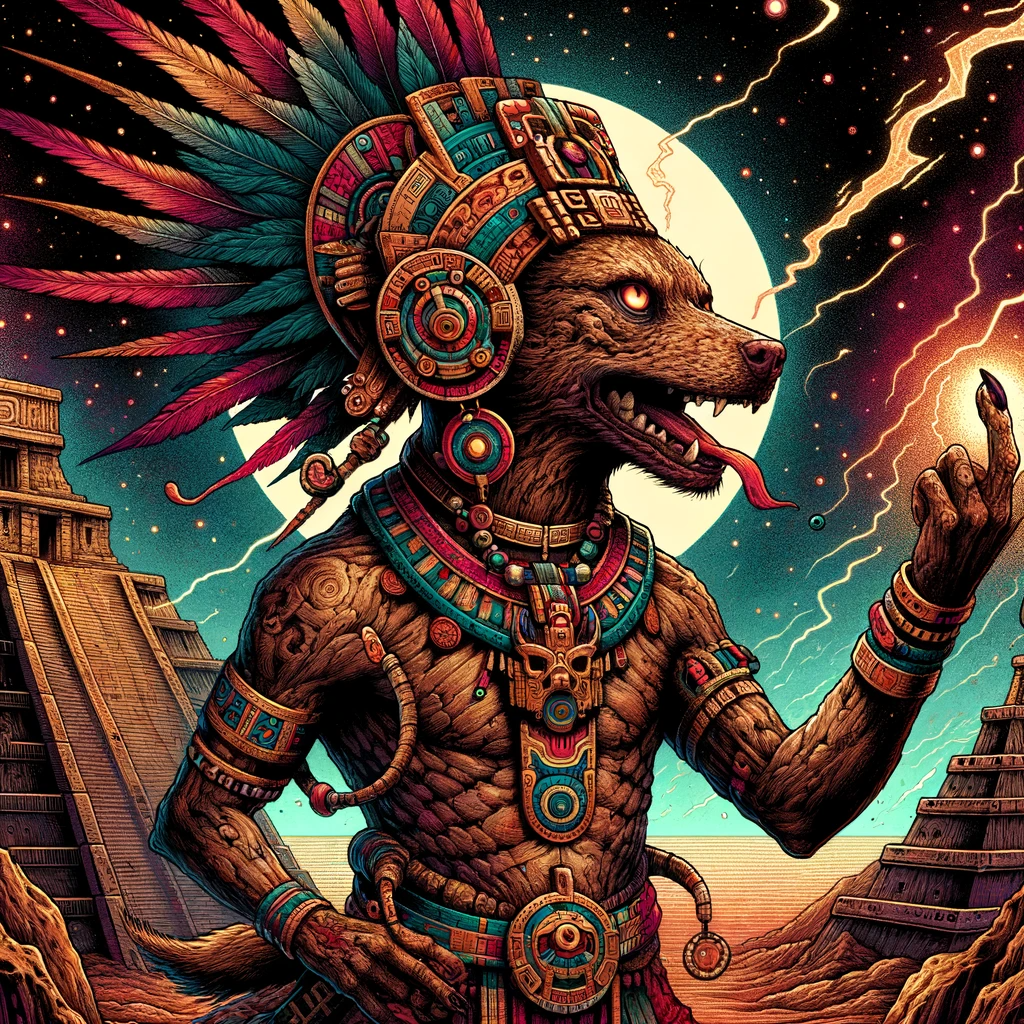
In the rich tapestry of Aztec mythology, few deities are as enigmatic and multifaceted as Xolotl. Often depicted with the head of a dog and associated with the twilight, Xolotl is a figure of both intrigue and awe.
Origins and Depictions
Xolotl, whose name can be translated to 'the animal', is primarily known as the twin brother of Quetzalcoatl, one of the most important gods in the Aztec pantheon. While Quetzalcoatl is associated with the wind, the morning star, and the dawn, Xolotl is linked to the evening star and the twilight. He is often depicted with a skeletal body, a dog-headed face, and backward feet, symbolizing his connection to the otherworldly.
Roles and Symbolism
Xolotl's roles are diverse and fascinating. He is the god of fire and lightning, but also of deformities and monsters, highlighting the Aztecs' respect for the duality of life. As a psychopomp, Xolotl guides the souls of the dead to Mictlan, the Aztec underworld, a role that underscores his association with the dog, an animal believed by the Aztecs to guide the dead on their journey.
Another significant aspect of Xolotl is his representation of transformation. He is linked to the setting sun, a symbol of the death of the day, and is also associated with the Xolotl flower, which blooms at night. These associations underscore his connection to the ideas of change and rebirth.
Cultural Significance
Xolotl’s importance in Aztec culture cannot be overstated. He was central to the Aztec understanding of the balance between life and death, and between light and darkness. His guidance of souls to the underworld was a crucial aspect of the Aztec belief in the afterlife and the cycle of life and death. Additionally, his association with dogs, revered animals in Aztec culture, further elevates his status.
Worship and Rituals
Worship of Xolotl involved various rituals and offerings, often including animals and other symbols of transformation and travel. His temples and shrines were places where people sought protection during transitions or at twilight, a time considered as powerful and mysterious.
Conclusion
Xolotl, with his diverse roles and deep symbolism, is a testament to the complexity and richness of Aztec mythology. His depiction and the beliefs surrounding him reflect the Aztec understanding of the world as a place of constant change and balance. Today, Xolotl remains a fascinating figure in the study of Mesoamerican cultures, offering insights into the beliefs, rituals, and worldview of the Aztec people.
Origins and Depictions
Xolotl, whose name can be translated to 'the animal', is primarily known as the twin brother of Quetzalcoatl, one of the most important gods in the Aztec pantheon. While Quetzalcoatl is associated with the wind, the morning star, and the dawn, Xolotl is linked to the evening star and the twilight. He is often depicted with a skeletal body, a dog-headed face, and backward feet, symbolizing his connection to the otherworldly.
Roles and Symbolism
Xolotl's roles are diverse and fascinating. He is the god of fire and lightning, but also of deformities and monsters, highlighting the Aztecs' respect for the duality of life. As a psychopomp, Xolotl guides the souls of the dead to Mictlan, the Aztec underworld, a role that underscores his association with the dog, an animal believed by the Aztecs to guide the dead on their journey.
Another significant aspect of Xolotl is his representation of transformation. He is linked to the setting sun, a symbol of the death of the day, and is also associated with the Xolotl flower, which blooms at night. These associations underscore his connection to the ideas of change and rebirth.
Cultural Significance
Xolotl’s importance in Aztec culture cannot be overstated. He was central to the Aztec understanding of the balance between life and death, and between light and darkness. His guidance of souls to the underworld was a crucial aspect of the Aztec belief in the afterlife and the cycle of life and death. Additionally, his association with dogs, revered animals in Aztec culture, further elevates his status.
Worship and Rituals
Worship of Xolotl involved various rituals and offerings, often including animals and other symbols of transformation and travel. His temples and shrines were places where people sought protection during transitions or at twilight, a time considered as powerful and mysterious.
Conclusion
Xolotl, with his diverse roles and deep symbolism, is a testament to the complexity and richness of Aztec mythology. His depiction and the beliefs surrounding him reflect the Aztec understanding of the world as a place of constant change and balance. Today, Xolotl remains a fascinating figure in the study of Mesoamerican cultures, offering insights into the beliefs, rituals, and worldview of the Aztec people.